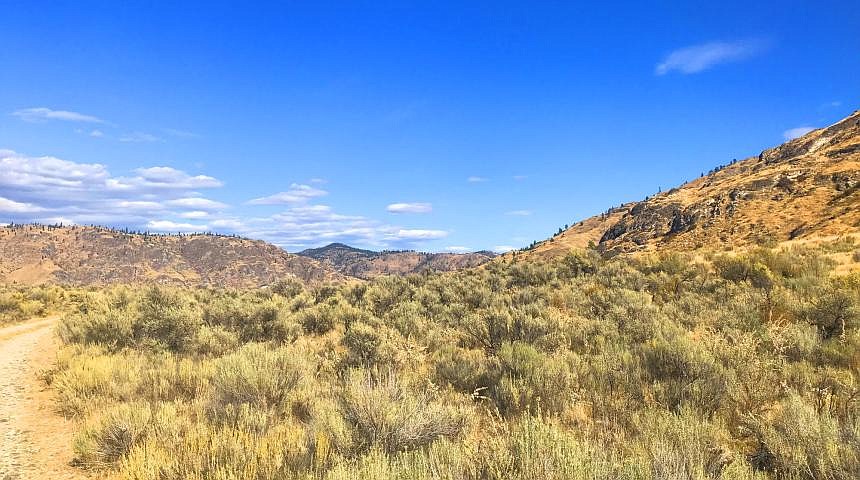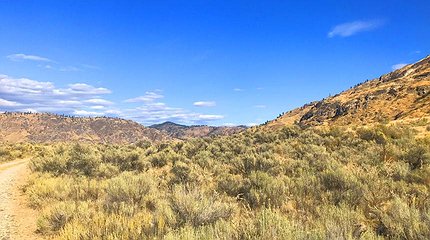State shrubsteppe habitat conservation plan submitted
GABRIEL DAVIS | Hagadone News Network | UPDATED 10 months, 2 weeks AGO
Gabriel Davis is a resident of Othello who enjoys the connections with his sources. Davis is a graduate of Northwest Nazarene University where he studied English and creative writing. During his free time, he enjoys reading, TV, movies and games – anything with a good story, though he has a preference for science fiction and crime. He covers the communities on the south end of Grant County and in Adams County. | March 13, 2024 4:12 PM
OLYMPIA — The Washington Department of Fish and Wildlife, Washington State Conservation Commission and Washington State Department of Natural Resources last week submitted a new plan to the state Legislature intended to guide future conservation of Washington’s shrubsteppe habitat, according to a Monday WDFW announcement.
According to the statement, the Washington Shrubsteppe Restoration and Resiliency Initiative Long-term Strategy aims to protect wildlife and habitat while supporting working lands and communities across the shrubsteppe landscape, especially amid the increased threat of wildfires throughout Washington. The plan is intended as a 30-year guide.
“This strategy represents the culmination of years of important work to better define actions needed to address the threats facing shrubsteppe habitats, wildlife, and communities in Washington,” said WDFW Director Kelly Susewind. “We as a state are now in a stronger position to move forward protecting this vital landscape in the face of new and ever-changing challenges.”
The shrubsteppe landscape once covered more than 10 million acres in Eastern Washington, the statement said. Shrubsteppe still provides habitat for a wide range of plant and wildlife species, some of which – like the endangered Columbia Basin pygmy rabbit — live only in the shrubsteppe.
An estimated 60 to 80% of Washington’s shrubsteppe habitat has already been lost or degraded from wildfires, invasive species, land-use conversion and more, the announcement said. Fires in recent years have burned hundreds of thousands of acres of Eastern Washington habitat; in September 2020, an unprecedented fire event burned 300,000 acres in a single day.
“Our shrubsteppe habitats are such a crucial landscape in Washington, and I’m eager to see this strategy come to fruition,” said Commissioner of Public Lands Hilary Franz. “This is a big step forward in protecting these habitats from continued threats, including the ever-present dangers of wildfire. I’m eager to see the impact that this collaboration will have on this important habitat and the surrounding species.”
The new strategy document includes four key goals covering themes of community engagement, habitat protection and restoration, species management and wildfire management, the statement said, as well as actions to accomplish these goals.
According to the announcement, the long-term strategy emphasizes the need for a wide spectrum of coordinated recovery efforts through strategic investments that defend, grow and connect the remaining core shrubsteppe habitat. An extensive mapping effort accompanied the development of the new strategy, helping experts better understand the current status of shrubsteppe in Eastern Washington and where to focus conservation efforts.
“This final plan is the result of two years of dedicated collaboration with WDFW and DNR and underscores our steadfast commitment to working closely with both agencies. We are very excited to be able to present the plan in its final form,” said James Thompson, SCC executive director. “This work is important to chart our path forward through collaborative community engagement and support of working lands in our state’s shrubsteppe landscape. We look forward to many more years of fruitful cooperation for exciting conservation and restoration progress.”
More information on WSRRI, the long-term strategy and Washington’s shrubsteppe landscape is available at wdfw.wa.gov.
ARTICLES BY GABRIEL DAVIS

Work-based learning lets students build their own futures
MOSES LAKE — Work-based learning provides education opportunities for the workforce to receive hands-on training and technical education and prepare themselves to enter various industries. Educators and workforce development professionals from Eastern Washington discussed some the training they offer and the benefits of their programs. Next Generation Zone, an affiliate of WorkSource based in Spokane, provides job training opportunities for youth and young adults ages 16 to 24. Program Coordinator Kate Martin said there are multiple benefits to the program. “One of them is a paid work experience, and that’s where we reach out to area employers who are willing to take a young person and train them,” she said. “This is a short-term learning experience, so it’s typically about 240 hours; sometimes it could be longer or shorter. We’re the actual employer; we cover all of their wages, taxes, the L&I, and the employer just agrees to give them the experience and train them in whatever field it is that they’re wanting to go into.”

Serving schools: ESD superintendents reflect on operations, priorities
MOSES LAKE — Educational service districts are government-mandated agencies put in place to provide services to school districts across the state. ESD Superintendents discussed what they do and their priorities in operating their districts. ESD 105, led by Superintendent Kevin Chase, serves four counties, including Kittitas, Yakima and portions of Klickitat and Grant counties and provides support for 25 school districts – including Royal School District and Wahluke School District – and more than 66,000 students. “We help them collaborate with each other as well or collaborate with other partners,” Chase said. “(It’s) a lot of advocacy work, either regionally or across the state, or even federally, working on different issues that impact our education. And we provide very specialized services in certain situations in order to meet the needs of our students in our region and of our school districts.”

Columbia Basin Project making headway through Odessa Groundwater program
CASHMERE — The Columbia Basin Project is making gradual progress toward completion with particularly significant accomplishments for the Odessa Groundwater Replacement Program in the last six months or so, according to Columbia Basin Development League Executive Director Sara Higgins. “When we’re dealing with a project of this size, advancement is kind of like watching paint dry, but yes, there have been (developments),” she said. “There are a lot of exciting things happening right now.” There are more than 300 miles of main canals, about 2,000 miles of lateral canals and 3,500 miles of drains and wasteways in the irrigation project, according to the U.S. Bureau of Reclamation website. The CBDL advocates for the operation of those waterways and for the project to continue “build-out.”




